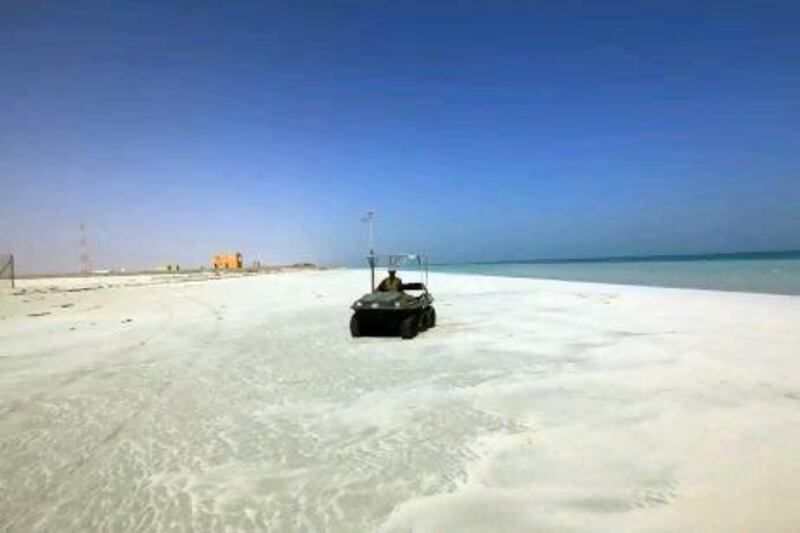DUBAI // Residents who live near the nation's first nuclear plant at Braka in Abu Dhabi's Western Region have been told they will be surrounded by a network of air-quality monitors to ensure that the plant releases only acceptable, small and safe levels of radiation.
"You will get a radiation dose from living anywhere in the world, including in Abu Dhabi - from the walls, the rocks, sand, from cosmic rays, from bananas … even potassium in your body," said John Loy, the director of radiation safety at the Federal Authority for Nuclear Regulation.
Radiation exposure is measured in millisieverts (mSv) per annum and, for the average person, radiation received from natural sources is estimated at two mSv per year.
"Any activity using radioactive sources or nuclear material will result in some radiation dose to the public. There is an internationally accepted limit to that dose," Mr Loy said, of one mSv/year.
In December 2010, the authority received a construction licence application from the Emirates Nuclear Energy Corporation (Enec), which will build and operate the plant.
The document describes "the whole reactor design and all the safety systems that are built into the design and all the assessments and evaluations that were done to demonstrate that the plant can be built and operated safely".
It has been under review by the nuclear regulation authority for more than 18 months.
As parts of the construction application, the corporation had to submit documents showing that the Braka facility will be designed to discharge levels of radioactivity significantly below the internationally accepted limit of one mSv.
Water used in the operation of the plant and then released into the sea will cause exposure of not more than 0.03 mSv per year, while the gases released by the plant will cause exposure of not more than 0.05 mSv per year.
"The plant is designed and will be constructed to these constraints," said Maha Aziz, the authority's manager of radiation safety in nuclear facilities.
Once the nuclear plant is up and running, both the operator and the authority will measure water and air quality in the vicinity of the plant.
To monitor water quality, samples will be taken directly from the water discharged from the facility at sea, as well as from seawater in the vicinity of the plant.
"When Enec reports a certain discharge sample, from time to time, we will take independent samples or we may split a sample - they measure it and we measure," said Mr Loy. "In addition we plan to have a network of air monitoring stations around the plant that will actually be measuring radioactivity in the air continuously."
The network will consist of about 30 fixed stations, as well as several mobile stations.
Generally, people may be subjected to radiation from the plant via marine life such as fish and invertebrates, from swimming or boating near discharge sites, using desalinated water, or from airborne particles settling on vegetation, food crops and people's skin.
"All of those are 'pathways' for radiation and they are well known," said Mr Loy. "That is the challenge Enec had: to show they had thought about all of those pathways and analyse them all and then demonstrate the dosage will be below these constraints."
Mr Loy said all known pathways, including those previously mentioned, would be subject to rigorous testing to ensure levels were kept below the acceptable standard.
"What we will do is look at those pathways and say, 'OK, the assumption has been that fish take up some radioactivity, so let's catch some fish and measure it'. What we hope to then find is that radiation is less than what was predicted."
* With additional reporting by Awad Mustafa






